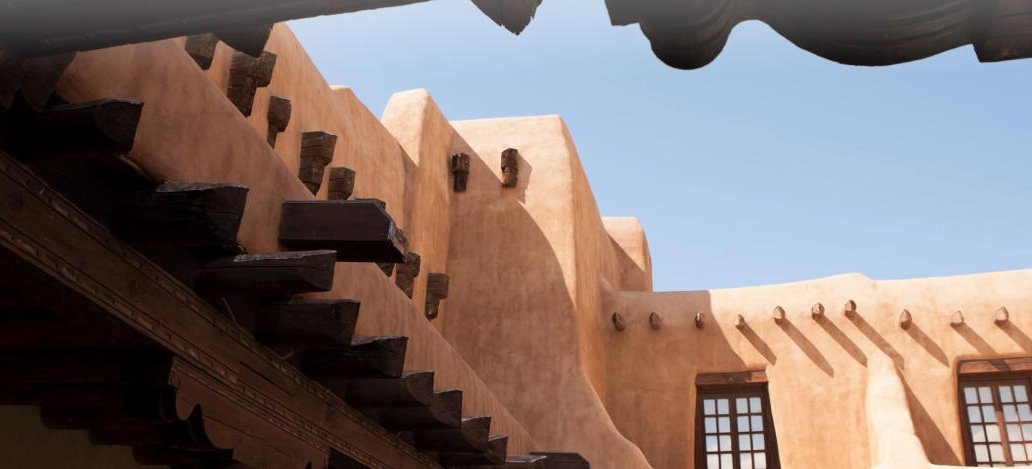
Connections: Sante Fe with Historian Ana Pacheco
Santa Fe, New Mexico is lauded for many things: its artistry, the desert beauty, its blend of flavors that make up its vibrant culinary scene. But each of these virtues flow from what can be argued as Santa Fe’s most fascinating quality: its depth of history. Aside from being the oldest European community west of the Mississippi, its history long predates the beginnings of colonization in 1607 with eons of Indigenous culture. Today, each layer of the city’s history can be seen in the influences of Spanish, Native American, Mexican and English culture. We spoke with local Santa Fe historian, Ana Pacheco, to hear her perspective on Santa Fe’s intrigue.
At All Roads North, we believe that a place is nothing without its people. So often, when we ask our clients the most memorable parts of their journey, it’s not the Instagram-worthy landscape or acclaimed hotel that they mention, it’s the encounters they had along the way. That’s why our trips are carefully designed to make those connections, providing you with an authentic and immersive experience. These experiences– whether it be with a local craftsman, musician, chef or marine biologist– are the inspiration for our Connections series, where we talk to friends of All Roads North to get an insider’s look at some of our favorite places across the U.S.
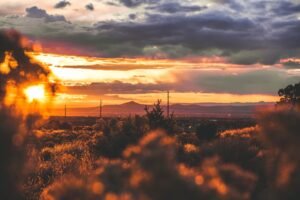
Tell us about your Santa Fe story?
My family settled in Santa Fe in 1692; I am the former historian for the city. I am the author of eight books on New Mexico history and the founding publisher and editor of La Herencia, a quarterly magazine on New Mexico history from 1994 through 2009.
What three words sum up Santa Fe for you?
City of Holy Faith.
What’s something that Santa Fe does better than anywhere else?
Santa Fe is a beacon for those in search of healing, self-discovery, and growth. (It has to do with the surrounding mountain vortex).
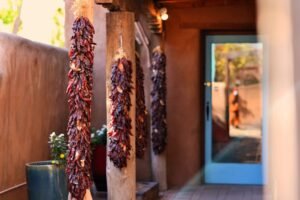
Canyon Road
What major tourist attraction lives up to the hype?
Canyon Road, which has the highest density of art galleries in the world.
What’s your favorite neighborhood to wander?
The Barrio de Analco, which features the oldest church in the U.S., the San Miguel Mission Church built between 1605 -1608. The Barrio de Analco was given its name by the Tlaxcalan Indians who came as slaves from Mexico with the Spanish Conquistadors in 1598. Analco means “on the other side of the river” in Nahuatl, the native language of the Tlaxcalans. During the day, the Barrio Analco is buzzing with the activity of people visiting the San Miguel Mission. San Miguel is the oldest church in the U.S. built between 1605–1608. Just up the street is the New Mexico State capitol where people like to meander. Santa Fe is such an art town that you can visit the Governor’s Gallery on the top floor of the rotunda – New Mexico’s state capitol is the only round state capitol in the country. Most of the buildings on the east side of the neighborhood were built upon the San Miguel cemetery, the oldest cemetery in town. Throughout the decades there have been several instances of ghost sightings. Few people wander around the Barrio Analco at night for that reason but for those adventurous souls’ ghost hunting is always an option!
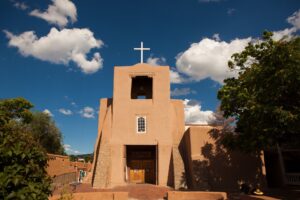
Underrated in Santa Fe, overrated in Santa Fe, personal favorite, and recent discovery?
Underrated: The artist market at the Santa Fe Railyard. More visitors need to experience the work of local artists. Overrated: Some of Santa Fe’s high-end restaurants, too expensive with a lack of continuity—one great experience doesn’t equate to an exceptional second visit. Personal favorite: You can’t go wrong with a Frito Pie in Santa Fe. Recent discovery: This summer a street vendor was selling bizcochito ice cream sandwiches on the Santa Fe Plaza. The bizcochito is the New Mexico state cookie made with anise.
What restaurant do you take friends from out of town for dinner, a casual local’s favorite, and a weekend brunch?
The Compound for dinner, Rancho de Chimayo for lunch and La Plazuela at La Fonda hotel for brunch.
Where do you go to get into nature?
Santa Fe is surrounded by parks and trails, so I just walk a couple of blocks from my home to enjoy the great outdoors. I like to walk along Alameda Street which runs parallel to Canyon Road and the Santa Fe River. In the autumn, the leaves of the cottonwood trees changing color and the smell of green chile roasting makes for the most enjoyable two-mile walk in Santa Fe.
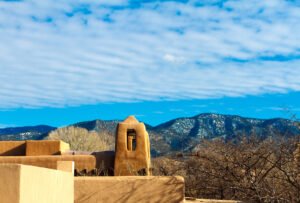
What trends are you noticing in Santa Fe right now?
An emphasis on modern art versus traditional and historic art forms.
From your perspective as a historian, what fascinates you the most about Santa Fe’s history?
The history of this nation would not be complete without the story of Santa Fe. Santa Fe is the most historically significant city in this country that has impacted the world through different historical events during different centuries. For example, in 1943 the Manhattan Project and the atomic bomb had their genesis in Santa Fe. Both triumphant and tragic, the development of the bomb changed the course of world history.
